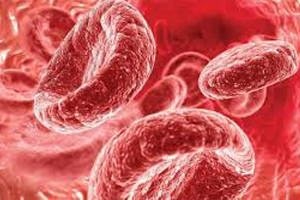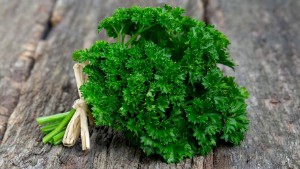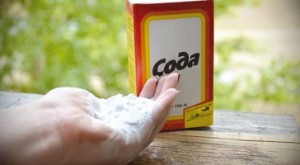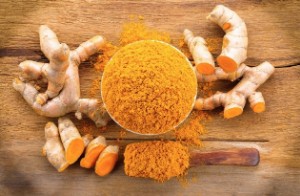Which foods increase hemoglobin in the blood — a list of 20 options with the highest iron content
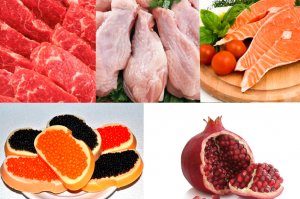 Low hemoglobin comprehensively worsens the condition of the body, since in this case all organs and tissues experience oxygen starvation.
Low hemoglobin comprehensively worsens the condition of the body, since in this case all organs and tissues experience oxygen starvation.
And this is complemented by an increased load on the cardiovascular system - the body simply accelerates blood flow to increase the flow of oxygen.
Hemoglobin deficiency and anemia in preschool children are especially dangerous – this often provokes the development of pathologies of the nervous system, which eventually leads to mental retardation.
According to numerous studies, hemoglobin levels can be regulated by following a diet, including or excluding iron-containing foods from the diet.
We have compiled a rating of the 20 most effective foods that should be included in the diet to increase the concentration of hemoglobin in the blood. We will also describe the general principles of nutrition and the recommendations of doctors.
Recall that in the last article we reviewed 7 products that reduce hemoglobin levels .
Content
Factors influencing hemoglobin
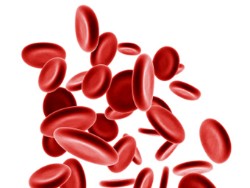 The main hemoglobin is iron. It is through the process of its oxidation and reduction that oxygen is transported and absorbed in the tissues of a living organism.
The main hemoglobin is iron. It is through the process of its oxidation and reduction that oxygen is transported and absorbed in the tissues of a living organism.
Iron deficiency is one of the most common causes of a sharp decrease in hemoglobin levels.
However, it is not enough to simply include iron-rich foods in the diet. This trace element cannot be fully absorbed without certain factors. For example, for its cleavage into derivative atoms (which then react with certain groups of proteins), vitamin C and B-group vitamins are necessary ( especially folic acid ), omega-3 and omega-6 unsaturated fatty acids.
Along with this, there are a number of factors that reduce the bioavailability of iron. For example, the high content of calcium in the body slows down the process of producing new hemoglobin molecules. If there is a deficiency of the above-mentioned trace elements, iron simply will not be absorbed.
If low hemoglobin levels are triggered by a deficiency of micronutrients, it is recommended to include the following foods in the diet:
- Iron-rich;
- Rich in vitamins C, E, B-groups;
- Rich in amino acids (preferably of animal origin);
- Exclude those products that reduce the bioavailability of iron.
In most cases, the above list of recommendations will be enough to normalize the composition of the shaped elements in the blood.
A list of 20 products to increase it
The body should receive sufficient amounts of all micronutrients, including minerals, vitamins, and metals. All these elements directly or indirectly affect the hematopoietic function, which must be stimulated (hemoglobin is produced in bone marrow , as well as erythrocytes, platelets, leukocytes). So, here is a list of the 20 most effective products.
1. Liver
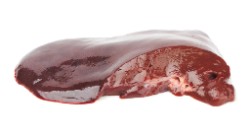 Any liver is useful for hemoglobin
. Beef, chicken, pork will do. Moreover, it is a weak roast (Rare), since in this case most of the micronutrients are preserved.
Any liver is useful for hemoglobin
. Beef, chicken, pork will do. Moreover, it is a weak roast (Rare), since in this case most of the micronutrients are preserved.
The liver contains both B-group vitamins, iron (6.9 mg per 100 grams), and iodine – all this contributes to an increase in hemoglobin levels.
2. Meat
 The basis of any meat is a wide range of proteins and essential amino acids, which react with iron, thereby forming hemoglobin molecules.
The basis of any meat is a wide range of proteins and essential amino acids, which react with iron, thereby forming hemoglobin molecules.
More effective types of meat in this regard are rabbit, pork, beef. But, again, meat should be subjected to minimal heat treatment, ideally steamed.
3. Buckwheat
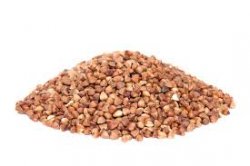 Almost all grains reduce the bioavailability of iron. The only exception is buckwheat, which acts exactly the opposite.
Almost all grains reduce the bioavailability of iron. The only exception is buckwheat, which acts exactly the opposite.
Beyond that, buckwheat also contains iron (almost 7 mg per 100 grams of kernels). That is why it is recommended to use it primarily as a complementary food for infants, and not semolina (which contains calcium and, thereby, slows down the production of hemoglobin).
4. Halva
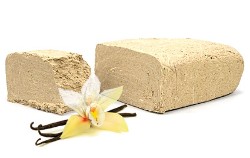 Halva contains a large amount of iron - almost 30 mg per 100 grams of product (and even more in tahini – up to 50 mg per 100 grams). That is, 50 grams of this dessert
provide a daily allowance
iron in the body.
Halva contains a large amount of iron - almost 30 mg per 100 grams of product (and even more in tahini – up to 50 mg per 100 grams). That is, 50 grams of this dessert
provide a daily allowance
iron in the body.
But it's worth considering that there are practically no B-group vitamins and ascorbic acid in halva. Therefore, if it is included in the diet, then taking care of a sufficient amount of other micronutrients that promote the absorption of iron.
5. Beet
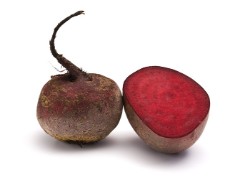 Contains both iron and amino acids, vitamins that helps to increase hemoglobin
. The peculiarity of table beetroot is that all the micronutrients in it are preserved even during heat treatment.
Contains both iron and amino acids, vitamins that helps to increase hemoglobin
. The peculiarity of table beetroot is that all the micronutrients in it are preserved even during heat treatment.
Beetroot juice can also be included in the diet, but it should be drunk in diluted form (1 part juice to 2 parts water).
6. Pomegranate
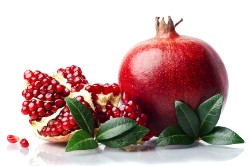 Of all fruits, it is pomegranate for hemoglobin
is considered the most useful
due to its high vitamin B content
6
.
Of all fruits, it is pomegranate for hemoglobin
is considered the most useful
due to its high vitamin B content
6
.
There is also iron in pomegranate seeds, but in small quantities – only 1 – 1.5 milligrams per 100 grams.
7. Carrots
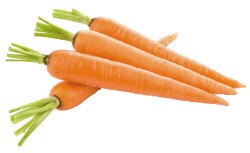 To raise hemoglobin, it is better to choose red carrots
- it contains the most beta-carotene and vitamin A.
To raise hemoglobin, it is better to choose red carrots
- it contains the most beta-carotene and vitamin A.
And these trace elements help accelerate biochemical reactions using calcium – reducing its "free" blood level increases the bioavailability of iron (carrots contain only 0.5 – 0.7 mg per 100 grams).
8. Dried fruits
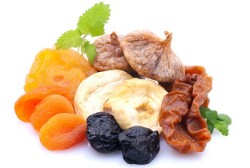 Of dried fruits
it is best to eat prunes, raisins, apricots, cherries, cherries, bananas – they contain vitamins B-groups, E, C.
Of dried fruits
it is best to eat prunes, raisins, apricots, cherries, cherries, bananas – they contain vitamins B-groups, E, C.
The fact that dried fruits contain a large amount of vegetable fiber also helps to accelerate the absorption of iron – this comprehensively normalizes the work of the gastrointestinal tract.
9. Nuts
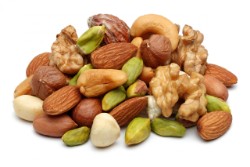 Walnuts, as well as pistachios, contain a considerable amount of omega-3 and omega-6 unsaturated fatty acids, which accelerate a whole complex of intercellular metabolic processes, including those with iron.
Walnuts, as well as pistachios, contain a considerable amount of omega-3 and omega-6 unsaturated fatty acids, which accelerate a whole complex of intercellular metabolic processes, including those with iron.
Nuts are considered the most useful for young children – they reduce the likelihood of pathologies of the nervous system by almost 2 times.
But peanuts should be discarded. It contains an extremely high amount of fat, which creates a high load on the gastrointestinal tract, and also slows down the absorption of iron.
7 blood-healthy nuts see a separate article.
10. Fish roe
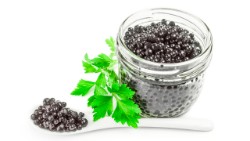 Both red, black, and yellow caviar are very useful in this regard
, as they contain iron (from 6 to 12 mg per 100 grams), as well as omega-3 unsaturated fatty acids. Literally 100 grams of such a product per day fully provides the body with all the necessary micronutrients to normalize hemoglobin levels.
Both red, black, and yellow caviar are very useful in this regard
, as they contain iron (from 6 to 12 mg per 100 grams), as well as omega-3 unsaturated fatty acids. Literally 100 grams of such a product per day fully provides the body with all the necessary micronutrients to normalize hemoglobin levels.
And most importantly, this product is easily digestible, so it can be included in the diet in the presence of chronic diseases of the gastrointestinal tract (when meat or liver are contraindicated).
11. Honey
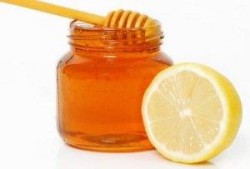 The main benefit of honey
- it contains a huge range of minerals (including rare ones that cannot be obtained from other foods), which
has a positive effect on the water-salt balance
. And this is also an important point in the normalization of hemoglobin levels.
The main benefit of honey
- it contains a huge range of minerals (including rare ones that cannot be obtained from other foods), which
has a positive effect on the water-salt balance
. And this is also an important point in the normalization of hemoglobin levels.
It will also help to get rid of edema, which often occurs when the load on the cardiovascular system increases (which will necessarily be with a hemoglobin deficiency).
12. Nettles
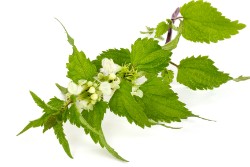 Contains a small amount of iron, as well as vitamin B 12
that
increases its bioavailability for the body
.
Contains a small amount of iron, as well as vitamin B 12
that
increases its bioavailability for the body
.
Nettles doctors recommend to include in the diet as a spice (in dried form) during pregnancy and breastfeeding.
But it is worth remembering – it also stimulates the secretion of gastric juice, which in gastritis or peptic ulcer of the stomach and / or duodenum can worsen the patient's condition.
13. Eggs
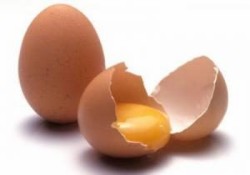 To increase hemoglobin, egg yolks should be consumed
- they contain up to 8 mg per 100 grams of iron. And it's better to eat them fresh or boiled.
To increase hemoglobin, egg yolks should be consumed
- they contain up to 8 mg per 100 grams of iron. And it's better to eat them fresh or boiled.
Fresh chicken eggs can be a source of the spread of salmonellosis. But quail also have iron in their composition, but their shells have smaller pores through which the infection does not penetrate. Therefore, they are considered safer – children are recommended to include them in the diet.
14. Fish
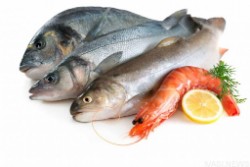 Sea fish
is rich in omega-3 unsaturated fatty acids. And the more fatty it is, the more fatty acids it contains. The river is also useful in this regard, carp (mirrored), pike and perch are better suited. And of the marine species of fish – tuna, salmon.
Sea fish
is rich in omega-3 unsaturated fatty acids. And the more fatty it is, the more fatty acids it contains. The river is also useful in this regard, carp (mirrored), pike and perch are better suited. And of the marine species of fish – tuna, salmon.
By the way, it is no less useful to eat seaweed. It contains iodine, which normalizes the endocrine system (which indirectly regulates the production of hemoglobin).
15. Chocolate
 Cocoa powder contains iron up to 12 mg per 100 grams (depending on the variety and variety). Nutritionists say that it is necessary to eat exactly natural black chocolate
. Milky, white, and pink are less useful.
Cocoa powder contains iron up to 12 mg per 100 grams (depending on the variety and variety). Nutritionists say that it is necessary to eat exactly natural black chocolate
. Milky, white, and pink are less useful.
And it is advisable to cook chocolate yourself at home without adding butter (since it reduces the bioavailability of iron).
Chocolate also stimulates metabolic processes between cells by stimulating the production of endorphins. But you should not abuse this property, since the body tends to increase the need for the same serotonin. That is, over time, addiction and a kind of addiction develop.
16. Rosehip
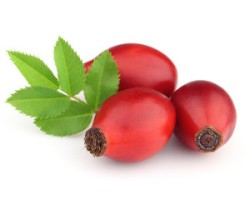 Among berries
- exactly
rosehip
is the largest source of ascorbic acid used in biochemical processes involving iron.
Among berries
- exactly
rosehip
is the largest source of ascorbic acid used in biochemical processes involving iron.
It is better to use rosehip in the form of a decoction (50 grams of fresh or dried berries per 300 milliliters of boiling water) or jelly.
Although rosehip contains a large amount of vitamin C, it does not irritate the mucous membrane of the stomach and esophagus, so these berries can be included in the diet for chronic diseases of the gastrointestinal tract.
17. Currant
 Contains slightly less ascorbic acid than rosehip. It is better to use black currant
- there is less tannin in it than in red (tannin is a tannin and slows down the production of hemoglobin).
Contains slightly less ascorbic acid than rosehip. It is better to use black currant
- there is less tannin in it than in red (tannin is a tannin and slows down the production of hemoglobin).
Currant leaves are no less useful, from which you can make fragrant and delicious tea. Its use is also an excellent prevention of immunodeficiency.
18. Strawberries
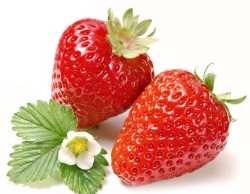 Strawberries
is rich in vitamin C, it also contains a small amount of iron (from 0.2 to 1 mg per 100 grams, depending on the variety, as well as the cultivation method).
Strawberries
is rich in vitamin C, it also contains a small amount of iron (from 0.2 to 1 mg per 100 grams, depending on the variety, as well as the cultivation method).
Only strawberries should be consumed whole either with sugar or honey, but not with sour cream, yogurt or cream.
19. Turmeric
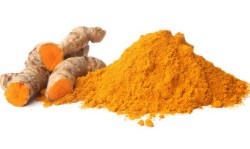 Of spices, namely turmeric
contains the most iron – about 35-50 mg per 100 grams. And most importantly, it is great for cooking almost any dish, even for some desserts.
Of spices, namely turmeric
contains the most iron – about 35-50 mg per 100 grams. And most importantly, it is great for cooking almost any dish, even for some desserts.
During pregnancy, turmeric should not be abused, as it can provoke spasms of smooth muscles. In critical cases, this will lead to premature birth altogether. Doctors warn about this in most cases.
20. Punch
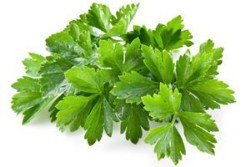 Of iron-containing greens – the most useful is parsley
. But it should be consumed fresh, so it's better to add it to salads, not soups. It contains about 2 mg of iron per 100 grams.
Of iron-containing greens – the most useful is parsley
. But it should be consumed fresh, so it's better to add it to salads, not soups. It contains about 2 mg of iron per 100 grams.
Parsley root is no less useful. It is also used as a spice.
Also check out the product table:
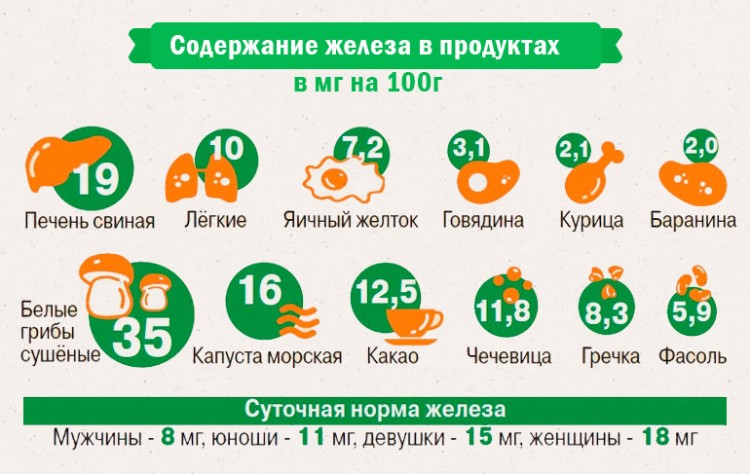
;
General rules of nutrition
For a faster and more effective increase in hemoglobin, nutritionists recommend following the following tips:
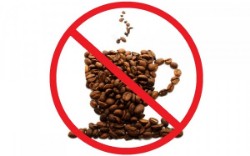
- Follow a fractional diet. You need to eat in small portions, but as often as possible. Optimally– at least 6 times a day.
- Give up cereals (except buckwheat) and fermented milk products - all of them slow down the absorption of iron , prevent the production of shaped elements and hemoglobin.
- Take a walk in the fresh air as often as possible - sufficient oxygen balance in the blood also indirectly stimulates the renewal of hemoglobin molecules, prevents the oxidation and destruction of red blood cells. Ideally, take walks in the fresh air after each meal (this will also help significantly speed up metabolism).
- Give up tea and coffee . Better give preference to herbal teas , as well as homemade compotes, fruit and vegetable juices.
- Do not eat 2-3 hours before scheduled sleep. Metabolic processes during sleep slow down significantly, so iron and vitamins are practically not absorbed during this period (but the load on the gastric mucosa increases, as the utilization of gastric juice slows down).
Features of the diet for certain groups of patients
The rules of nutrition for low hemoglobin differ slightly for different groups of patients. Nutritionists indicate:

- Adults. The norm of iron for adults is about 12 mg per day. It is much easier for adults to digest meat products, animal by-products (liver, lungs, kidneys, heart). It is recommended to include them in the diet daily at least in a minimum amount.
- Children. The norm of iron in children is from 8 to 11 milligrams per day. Preference should be given to vegetable products. But milk should not be abused, especially fatty ones, since it dramatically reduces the level of hemoglobin, slows down the absorption of iron. It is also recommended to include buckwheat, fish, a small amount of chocolate and halva in the diet.
- Pregnant. The iron requirement in pregnant women is the highest and reaches 20 mg per day. As a rule, they are prescribed specialized vitamin complexes to normalize hemoglobin. It is also recommended to eat fish, red caviar, and carrots. But it is better to give up turmeric, parsley and most other spices that stimulate smooth muscle spasm. The doctor, with whom the woman is registered, necessarily tells about all this in detail.
- The elderly. Their need for iron is the smallest – only 6-8 mg per day, which is explained by a natural slowdown in the functionality of the cardiovascular system and bone marrow. Doctors also recommend elderly people to eat fish, chicken fillet (breast, since there is practically no fat in it), as well as pomegranate and beet juice.
Folk remedies and vitamin complexes
If the inclusion of the above products in the diet did not bring the desired effect, then you can use folk remedies to increase hemoglobin levels. Many of them are extremely effective and are recommended for use even by doctors. The most popular of these methods are:
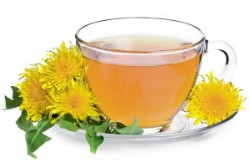
- Decoction of dandelion roots. Helps to normalize the biochemical composition of the blood, accelerate the elimination of toxins. To prepare, mix 30 grams of grated fresh dandelion roots with 2 cups of boiling water. Insist for at least 2 hours (until completely cooled). Consume 1 teaspoon, diluting in a glass of water with honey. Take it 2 times a day.
- Infusion of rosehip and honey. For cooking, mix 10 grams of dry grated rosehip fruits, 2 tablespoons of honey and a glass of boiling water. Infuse for 30-40 minutes, take as tea 2 times a day. The course is no more than 2 weeks (if more, then there may be an excess of iron in the body, which also negatively affects health).
- Infusion of St. John's wort, blackberry leaves and chamomile officinalis. Mix 1 teaspoon of dry herb base, add 300 milliliters of water and insist for 2 hours. Take 50 milliliters 3 times a day until the hemoglobin level normalizes (but no more than 4 weeks).
If folk methods of treatment do not bring the desired effect, then drug therapy is prescribed. As a rule, these are multivitamin complexes with a high content of iron, B–group vitamins, and ascorbic acid. But calcium in such preparations is either completely absent or contained in very small amounts. Popular vitamin complexes of this group:
- Decamevit;
- Aevit;
- Complivit;
- Dopel-Hertz (with iron).
It is only necessary to check with the attending physician the recommended dosage, as well as the duration of the course of treatment.
Interesting video
And now we invite you to familiarize yourself with the video:
Conclusion
In total, in most cases, it is possible to normalize the concentration of hemoglobin in the blood by a banal change in the diet. But this is not always enough, so you should not postpone going to the doctor. And the advanced stage of anemia is an extremely dangerous disease that can provoke both pathologies of the cardiovascular and nervous systems. This is especially important for infants. That is why it is recommended to donate blood for analysis at least once every 3 months in order to determine the concentration of hemoglobin and the presence of vitamin deficiency.
Doctors also claim that in almost 70% of cases, the reason for a decrease in hemoglobin is precisely non–compliance with a healthy diet.
